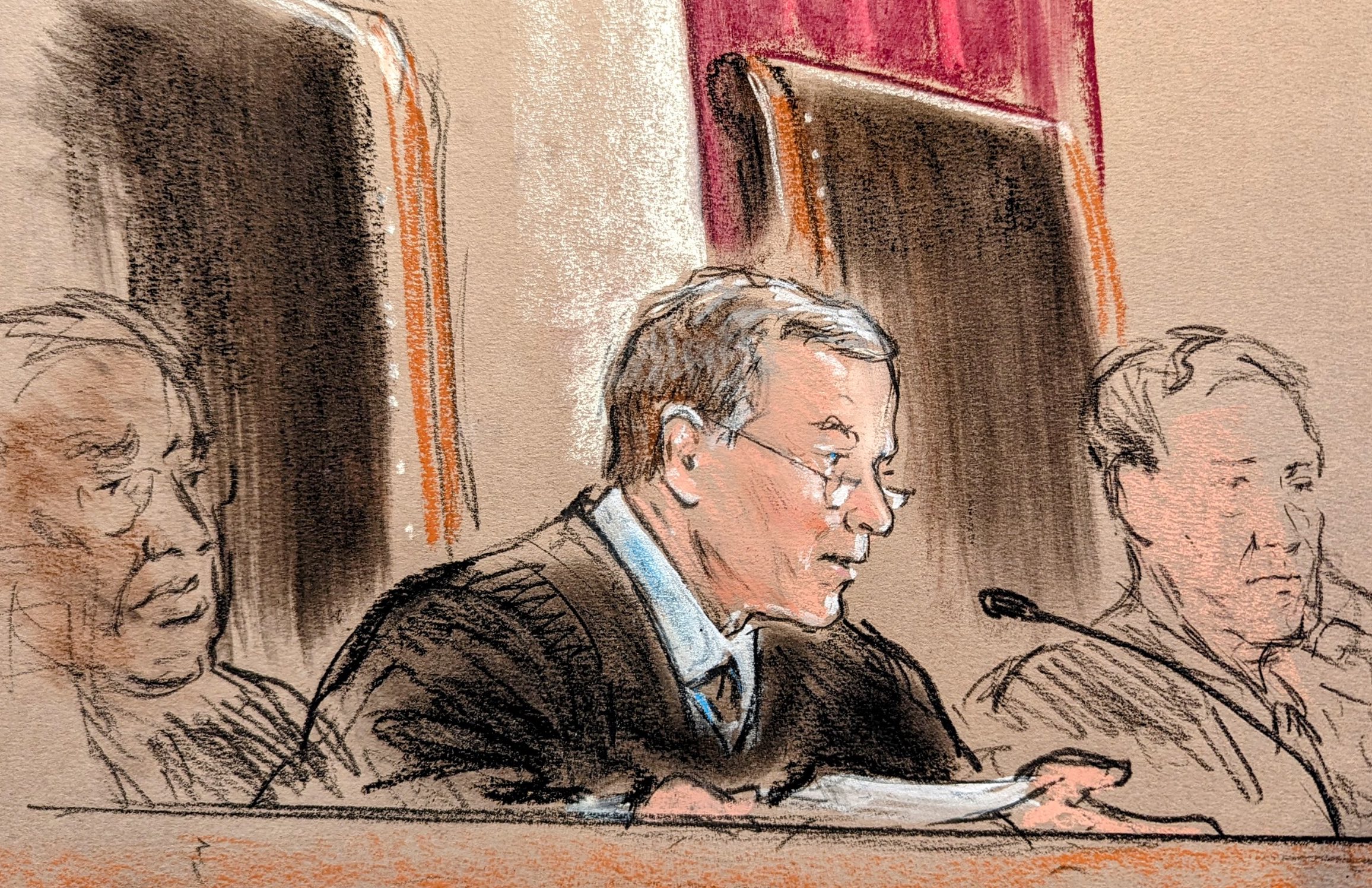The chief justice’s courtroom tribute to O’Connor


Chief Justice John Roberts opened Monday’s argument session with a heartfelt tribute to the late retired Justice Sandra Day O’Connor, who died Friday at age 93.
“I note that memorial drapery has been placed on the door of our courtroom to signify mourning for” O’Connor, the chief justice told a packed courtroom present for oral arguments in the bankruptcy case Harrington v. Purdue Pharma.
Roberts noted O’Connor’s roots on the Lazy B ranch in Arizona, and that she was born in El Paso, Texas, in 1930, “only because that was the closest full hospital to Lazy B, a mere four hours by train.”
“She was, in her own words, a cowgirl from the Arizona desert,” the chief justice said.
He took note of some of the familiar highlights of O’Connor’s rise, including her graduation from Stanford University and its law school, where she graduated third and “just two places from her future colleague William H. Rehnquist.”
When no law firm would hire her, she took an unpaid position with the district attorney of San Mateo, Calif., Roberts noted.
She married John Jay O’Connor III “by the fireplace of the Lazy B living room,” Roberts said. When John O’Connor was commissioned to the Judge Advocate General Corps of the U.S. Army, he went to JAG school in 1954 in Charlottesville, Va., the chief justice noted.
“One day, the O’Connors drove up to Washington to see the Supreme Court,” Roberts said. “John commented, erroneously, that ‘This is the first and last time we’ll ever see the place.'”
The chief justice mentioned the O’Connors’ move to Phoenix, where they had three sons, and Sandra Day O’Connor opened a law practice before entering state government and then Arizona politics and eventually that state bench.
“In August 1981, President Reagan nominated Sandra Day O’Connor to the Supreme Court of the United States,” Roberts said. “She won unanimous confirmation — 99 to 0 — thus becoming the first woman on the Supreme Court.”
He did not mention his own reported role that year, as a young lawyer in the Reagan administration, helping prepare O’Connor for her confirmation hearing.
“Always putting one foot in front of the other — ‘just do it,’ she would say — she changed the world,” Roberts continued, noting her love of skiing, tennis, golf, bridge, and ballroom dancing. “Participants in the morning aerobics class Justice O’Connor founded at the Supreme Court would hear about it if they missed a session. Lunch together for the justices was in her view mandatory to promote collegiality.”
“With irresistible force of will and constant motion, she yoked the justices together — and pressed forward,” the chief justice said. “Justice O’Connor made our country better by her work and her example.”
Roberts said that at the appropriate time, there would be the traditional memorial service of the court and the Supreme Court Bar in the courtroom.
“And now — as Justice O’Connor would somewhat impatiently insist — we turn to the business of the court,” Roberts said as he turned to bar admissions and the day’s argument.